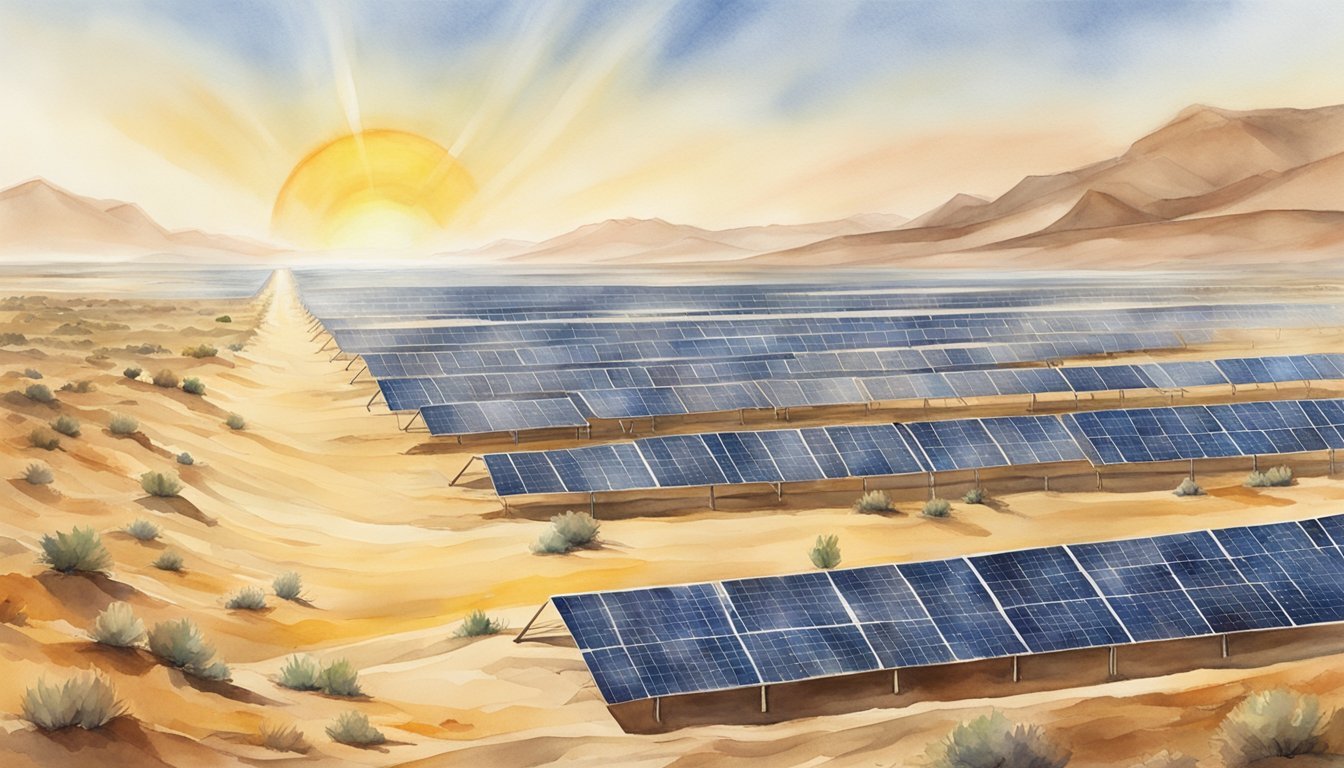Advantages and Challenges of Desert Solar Energy

Desert regions offer a promising canvas for the expansion of solar energy, harnessing the unobstructed sunlight they receive. However, implementing such large-scale solutions comes with its own set of complex challenges that must be thoughtfully addressed.
Abundance of Sunlight and Solar Potential
Deserts are synonymous with blazing sun and clear skies, proving to be rich in solar potential. For instance, the Sahara, the world’s largest hot desert, receives a staggering amount of sunlight that could support massive solar farms capable of meeting not just local but also significant portions of global energy demand. The high solar irradiance makes these areas ideal for photovoltaic (PV) panels and concentrated solar power (CSP) facilities, presenting an opportunity for clean energy generation that could contribute to reducing global warming.
Environmental Impacts and Habitat Considerations
The deployment of solar panels across deserts raises environmental concerns, particularly around habitat disruption. Areas such as deserts, although seemingly barren, are home to diverse ecosystems that must be considered when planning solar energy projects. For example, the Creosote bush is an integral part of desert ecosystems, and its conservation is vital. Moreover, solar installations can affect the albedo — the amount of sunlight reflected by the surface — potentially altering local and even global climate patterns. The introduction of infrastructure like irrigation systems to control dust on solar panels could further impact water-scarce desert environments.
Technological Innovations in Solar Panel Design
The harsh desert conditions necessitate innovation in solar technology. Sand and dust can accumulate on PV panels, reducing their efficiency and requiring regular cleaning, which is both labor-intensive and resource-consuming. Researchers are developing self-cleaning solar cells and dust-resistant coatings to tackle this issue. The application of such technologies would be crucial in maintaining the efficiency and sustainability of desert-based solar energy systems, ensuring that solar farms continue to be viable sources of renewable energy. Advances in technology also address temperature regulation, as excessive heat can decrease solar cell efficiency, prompting the design of cooling systems to mitigate such effects on energy generation.
Socioeconomic and Policy Aspects of Solar Development

The expansion of solar energy in desert regions intersects with a complex array of socioeconomic factors and policy frameworks, which dictate not only the pace and success of development but also its long-term sustainability and integration into local communities and the broader energy grid.
Energy Policies and Global Demand
The race to meet the surging global demand for electricity has placed solar energy at the forefront of the renewable energy sector. Initiatives from the Biden administration target a significant increase in renewable energy production, aiming to reduce dependency on fossil fuels. In the California desert and across the Middle East, utility-scale solar projects have become central to this shift, demonstrating the role of policy in steering the growth of the solar industry.
Education and Public Awareness
Public awareness and education on solar energy are critical, as they can lead to more responsible and efficient utility-scale and rooftop solar applications. Science and technology curriculums are beginning to reflect the importance of renewable energy, including providing information under a creative commons license that enables free public access to educational materials. This nurtures a society that is both knowledgeable about and supportive of green technology innovations.
Regulatory Challenges and Land Use
The deployment of solar energy projects often requires significant land use decisions, which can prompt regulatory challenges. Desert solar developments must balance the demand for clean energy with the preservation of wildlife habitat. For instance, public land in the western states is a prime location for solar farms yet is also the habitat of the desert tortoise and other endangered species. The fine-tuning of project design that minimizes disruption to these ecosystems is a topic of ongoing science and policy discussions.

